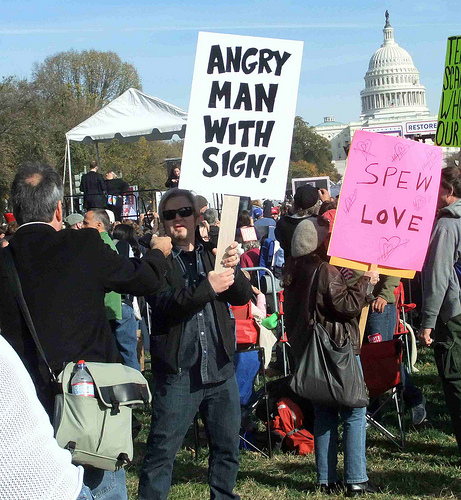Anger in itself doesn’t constitute a hostile work environment
Friend: My boss is kind of a jerk, and he’s breaking the law.
Me: Really? How?
Friend: He makes this place a hostile work environment.
Me: So he’s discriminating against others illegally?
Friend: Well, no, but he makes it uncomfortable to work there. He’s unpleasant, angry, and unpredictable.
I had this exchange with a good friend of mine recently, and the person was so convincing in the discussion that I had to go and look up “hostile work environment” one more time to be sure I was correct. Thankfully I was, but I thought it would be a good reminder to share the key pieces of the law that apply to that specific type of discrimination here.
What is a Hostile Work Environment?
In laymen’s terms, it’s an environment where a reasonable person cannot carry out the functions of their job due to some form of illegal discrimination that is occurring. Remember, all discrimination is not bad. That word has taken on some baggage in recent years, but you should discriminate on a daily basis.
The discriminatory behavior needs to be illegal, and we’re all pretty familiar with the categories that are protected under the law. And just in case you need a refresh on that, I have included the actual verbiage from the EEOC below to remind you.
What the EEOC says about a Hostile Work Environment
Harassment is a form of employment discrimination that violates Title VII of the Civil Rights Act of 1964, the Age Discrimination in Employment Act of 1967, (ADEA), and the Americans with Disabilities Act of 1990, (ADA).
Harassment is unwelcome conduct that is based on race, color, religion, sex (including pregnancy), national origin, age (40 or older), disability or genetic information. Harassment becomes unlawful where 1) enduring the offensive conduct becomes a condition of continued employment, or 2) the conduct is severe or pervasive enough to create a work environment that a reasonable person would consider intimidating, hostile, or abusive. Anti-discrimination laws also prohibit harassment against individuals in retaliation for filing a discrimination charge, testifying, or participating in any way in an investigation, proceeding, or lawsuit under these laws; or opposing employment practices that they reasonably believe discriminate against individuals, in violation of these laws.
Petty slights, annoyances, and isolated incidents (unless extremely serious) will not rise to the level of illegality. To be unlawful, the conduct must create a work environment that would be intimidating, hostile, or offensive to reasonable people. Source: eeoc
One last reminder
I ask one thing from you. If this was a good reminder for you, if you didn’t already know this, or if you just think this will be helpful to someone else, please forward this to them! The more people we can educate, whether it’s fellow HR professionals or our management staff, the better off we’ll be. :-)
Photo source: soukup

This article has kind of hit hard with me today. I have been struggling in my current position for some time now. Day to day life in the office has become unbearable.
I feel as an HR representative, I should have some say in moral compass of the company, and I am getting constant resistance from the owners. I have made countless recommendations for termination of employees under what I feel are justified scenarios, however, the cost to the business would be far too great to the owners. This company has turned into a quantity over quality, and in the process, has endangered the lives of our clients. I am now to the point where I no longer make suggestions based on legalities or morals, but in fact, keep my mouth shut, and watch as problem after problem arise. I dread going into work each day. This scares me thinking that this is a hostile work environment.